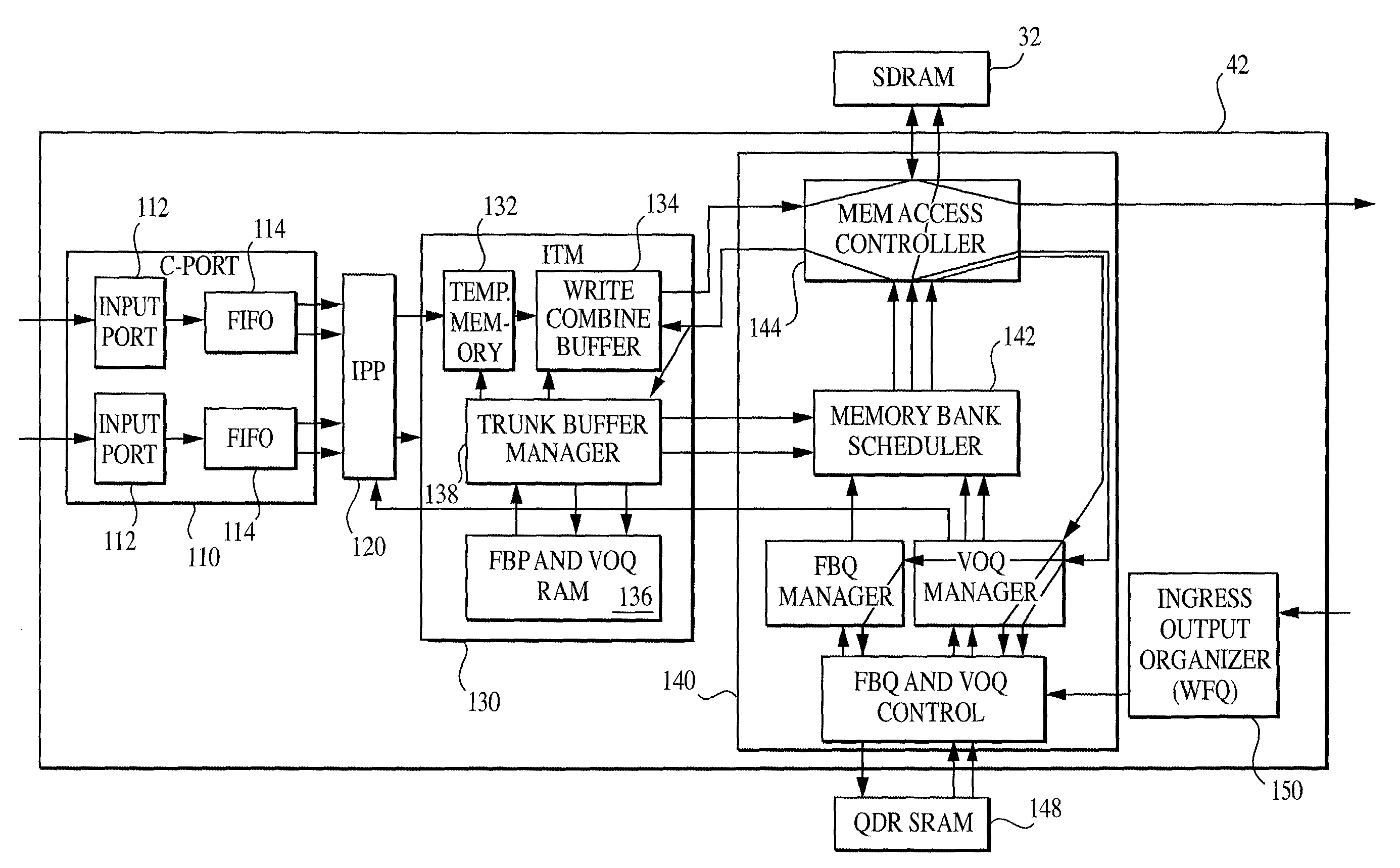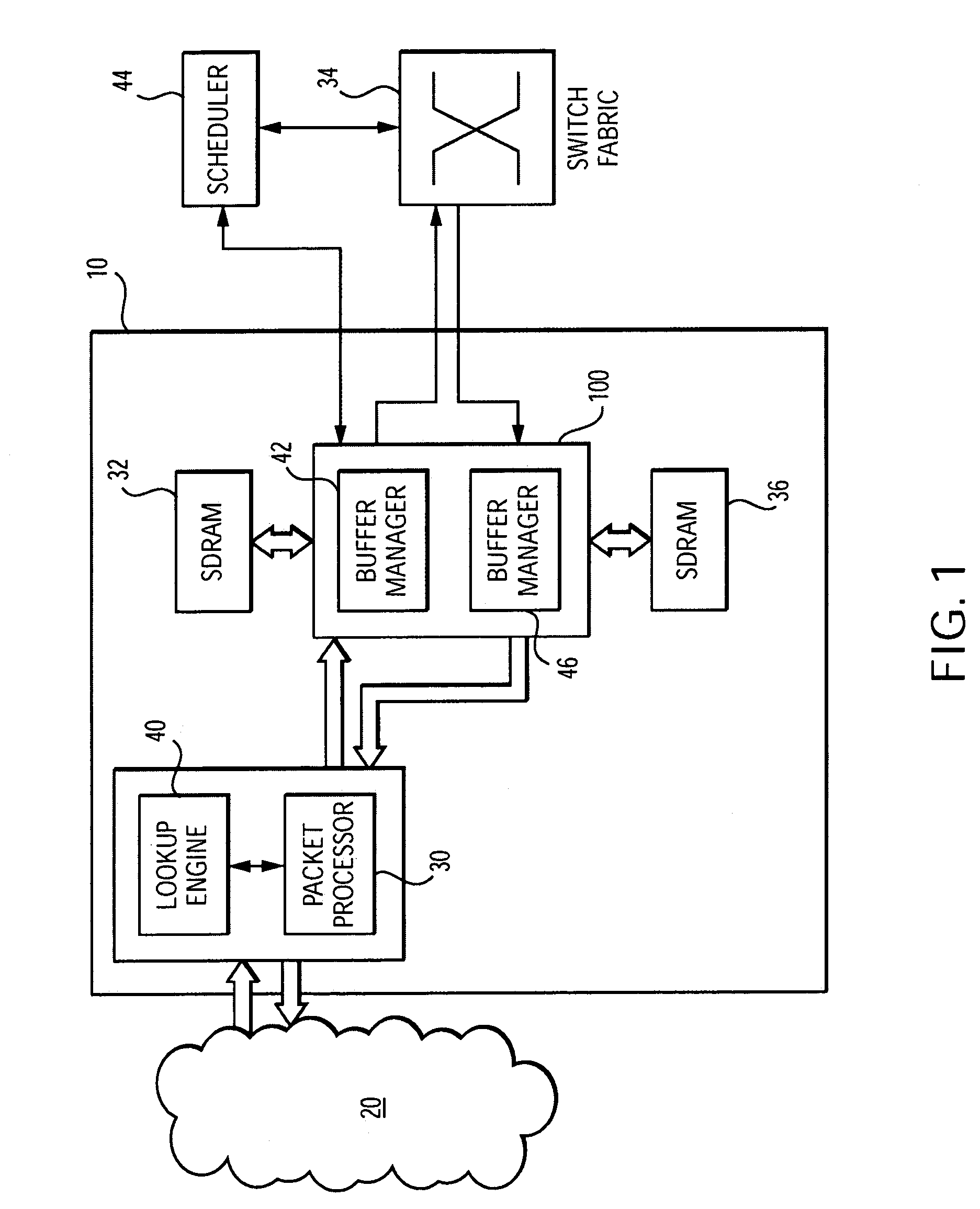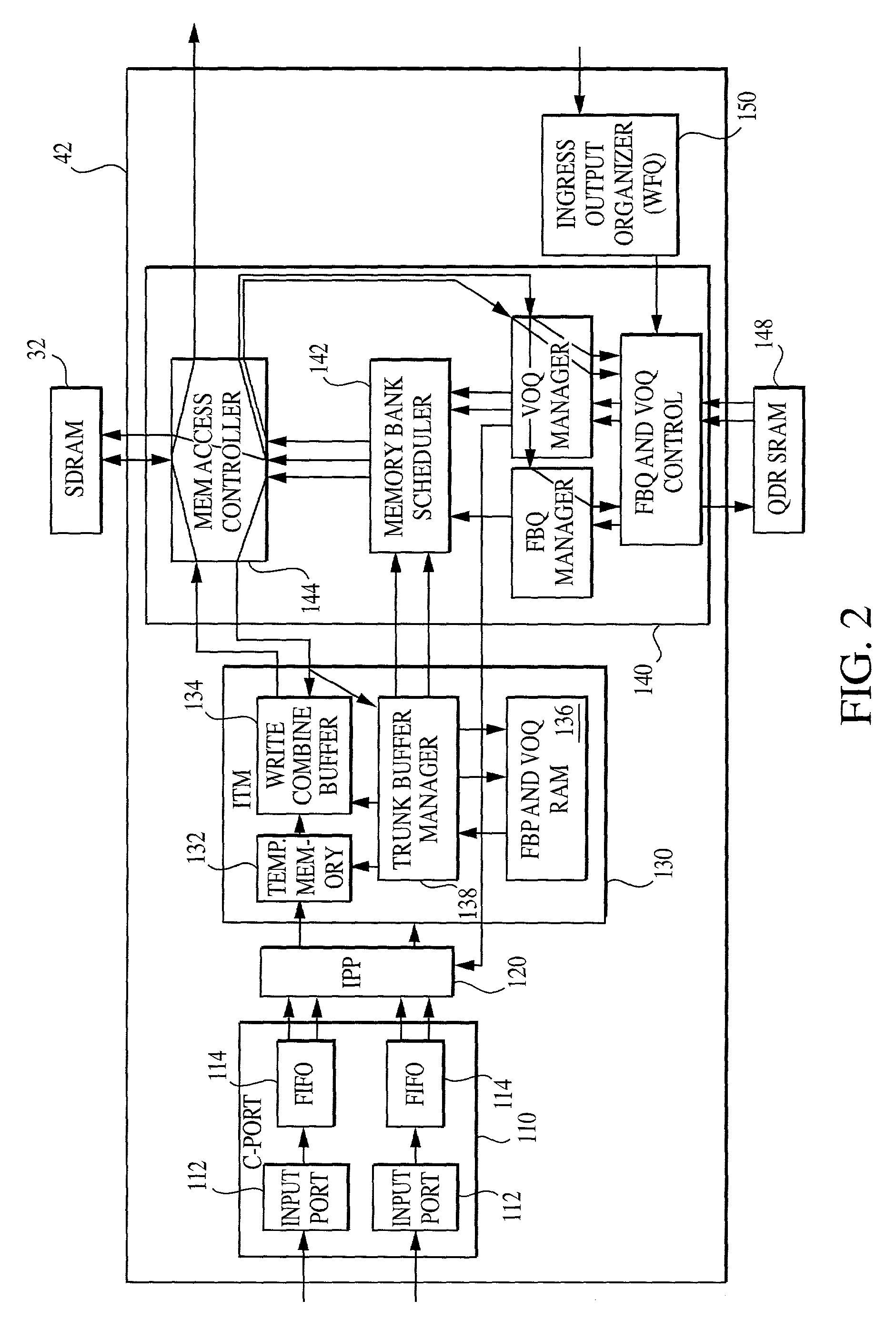High efficiency data buffering in a computer network device
a computer network device and buffering technology, applied in the field of buffering data, can solve the problem of limited packet processing speed in the network device, and achieve the effect of high speed
- Summary
- Abstract
- Description
- Claims
- Application Information
AI Technical Summary
Problems solved by technology
Method used
Image
Examples
Embodiment Construction
[0017]Referring to FIG. 1, a network line interface card (LIC) 10 is coupled to one or more computer networks, such as the Internet 20. Data packets from the Internet 20 are received at a packet processor 30. Generally, the LIC 10 communicates with a controller 100 that supervises temporarily storing the packets in an input memory 32, assigning them to the proper output port, sending them through a switch fabric 34 to the assigned output port, and temporarily storing the packets in an output memory 36 prior to sending them through the assigned output port back onto to the Internet 20. In some embodiments, it may be possible to send data stored in the input memory 32 directly to the assigned output port without the intermediary step of storing the data in the output memory 36.
[0018]After packets are received at the packet processor 30, data in the headers in the individual packets is examined and, by using an attached lookup engine 40, an output queue or virtual output queue (VOQ) is...
PUM
 Login to View More
Login to View More Abstract
Description
Claims
Application Information
 Login to View More
Login to View More - R&D
- Intellectual Property
- Life Sciences
- Materials
- Tech Scout
- Unparalleled Data Quality
- Higher Quality Content
- 60% Fewer Hallucinations
Browse by: Latest US Patents, China's latest patents, Technical Efficacy Thesaurus, Application Domain, Technology Topic, Popular Technical Reports.
© 2025 PatSnap. All rights reserved.Legal|Privacy policy|Modern Slavery Act Transparency Statement|Sitemap|About US| Contact US: help@patsnap.com



